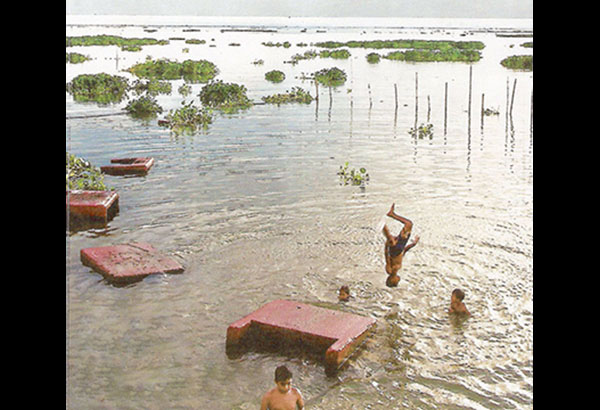STARScience: Saving Laguna de Bay

Laguna Lake
(1st of 2 parts)
MANILA, Philippines – The restoration of Laguna de Bay to a relatively pristine state is a major concern. This is a scientist’s account on a multidisciplinary two to three-year scientific endeavor that culminated in a Environmental Health Report Card (EHRC), which the Laguna Lake Development Authority (LLDA) launched in 2016.
The EHRC anticipated the directive of President Duterte to the Department of Environment and Natural Resources (DENR) to dismantle “the vast tracts of private fishpens in Laguna de Bay and give back the lake to the poor fishermen of the country.” The Report Card was based on the 10-year data of the LLDA from 2004 to 2013.
The two implementors in the development of the first EHRC for Laguna de Bay, the country’s largest inland water (surface area: 90,000 hectares or 900 square meters) were the following:
1) Partnerships in Environmental Management for the Seas of East Asia Resource Facility (PEMSEA); and
2) The LLDA under the UNEP/GEF Project on Global Foundation for Reducing Nutrient Enrichment and Oxygen Depletion from Land-based Pollution in support of Global Nutrient Cycle.
The key partners included the LLDA Technical Working Group; external experts from the University of the Philippines at Los Baños (UPLB); University of the Philippines Marine Science Institute (UPMSI); University of Santo Tomas (UST); Bureau of Fisheries and Aquatic Resources (BFAR); and the science communication team from the Integration and Application Network, University of Maryland Center for Environmental Science. The byline represented UPLB.
Indicators
For the four bays, namely the West, Central, East and South bays, we used the following indicators for water quality: nitrates, phosphates, chlorophyll a, dissolved oxygen (DO), biochemical oxygen demand (BOD) and total coliforms. These were compared with the DENR guidelines (DENR DAO 34 1990).
Three indicators were used for fisheries: zooplankton ratio, native fish composition, and catch per unit effort (CPUE). These were calculated as ratios or percentages and combined as percentage score for each bay. The grading scale was from A (91-100 percent), B (83-91 percent), C (75-83 percent), D (70-74) to F (0-70).
Scores
In water quality, the overall score of the entire lake was a low passing mark of 76 percent or C- (C minus). This means that the lake consistently met the DENR guidelines for Class C waters (suitable for fisheries and recreation), but chlorophyll a or algal matter was excessive. Water quality in the EHRC had chlorophyll a as indicator, representing the amount of algae in the lake, dissolved oxygen, nitrate-nitrogen, phosphate and biochemical oxygen demand. Chlorophyll a got a failing score because it was too excessive within the entire period when the data were gathered. An excessive amount of algae means that the lake is eutrophic. Eutrophication precipitates fish kills due to oxygen depletion that results when the algal bloom eventually dies or collapses.
Phosphate was too high, making the water highly eutrophic. Very high phosphate means abundant phosphorous to balance the rich nitrogen supply promoting algal growth; hence the algal bloom. Notwithstanding the acceptable DO and BOD levels, the highly eutrophic water promoted a negative impact on the fisheries.
Nutrients in the lake come primarily from the homes in the lake’s watershed, the aquaculture facilities (fish pens and fish cages), agricultural lands and industrial establishments around the lake. Ironically, these sustain the lake’s excessive fertility.
Consequently, lake fisheries scored a failing mark of 48 percent, which is F. Native fish composition was rated 53 percent, zooplankton ratio 68 percent, and catch per unit effort or CPUE, 22 percent. Invasive fish species and competition among fisherfolk contributed to the failing score. Clearly, the lake fisheries performed way below the desirable level.
Scores per bay West Bay
This Bay was scored as second in having the lowest water quality (76 percent). Although it is the most heavily developed side of the lake with the highest concentration of commercial fishpens and cages, it turned out in 2013 as having acceptable levels of dissolved oxygen (which causes water to have enough air), biochemical oxygen demand (a measure of pollution), and nitrate-nitrogen (plant nutrient). Coliform or bacterial counts were low but phosphate, another plant nutrient representing phosphorous, was high. These findings imply that there is a high population density in the lake watershed that is polluting the lake with nitrogen and phosphorus. Phosphorus entering the lake must be reduced.
West Bay fisheries got a failing mark of 55 percent, which was the second highest numerical fisheries score. This was taken from the following indicator scores: zooplankton (microscopic animals) ratio, 62 percent; CPUE, 35 percent; and native species composition, 68 percent. The estimated fishing ground allocation in West Bay was one fisher to 101 hectares.
Central Bay
The lowest score in water quality (71 percent) was given to this bay. But its fisheries score turned out to be 65 percent, a failing mark, but relatively higher than the other bays. Nitrate, DO, BOD and total coliform levels were acceptable at 100 percent; phosphate was too excessive and was given the lowest rating of 25 percent. Chlorophyll a was too excessive and rated 0 percent.
Despite its bad water quality, this bay came out with the widest variety of species as shown by the highest, but still failing, score for native fish species composition, 69 percent. Microscopic animals survived fairly well. Fishing ground allocation was around one per 110 hectares.
(To be concluded)
Macrina Tamayo-Zafaralla, PhD, is professor emeritus at the Institute of Biological Sciences, College of Arts and Sciences, UP Los Baños.
- Latest





























